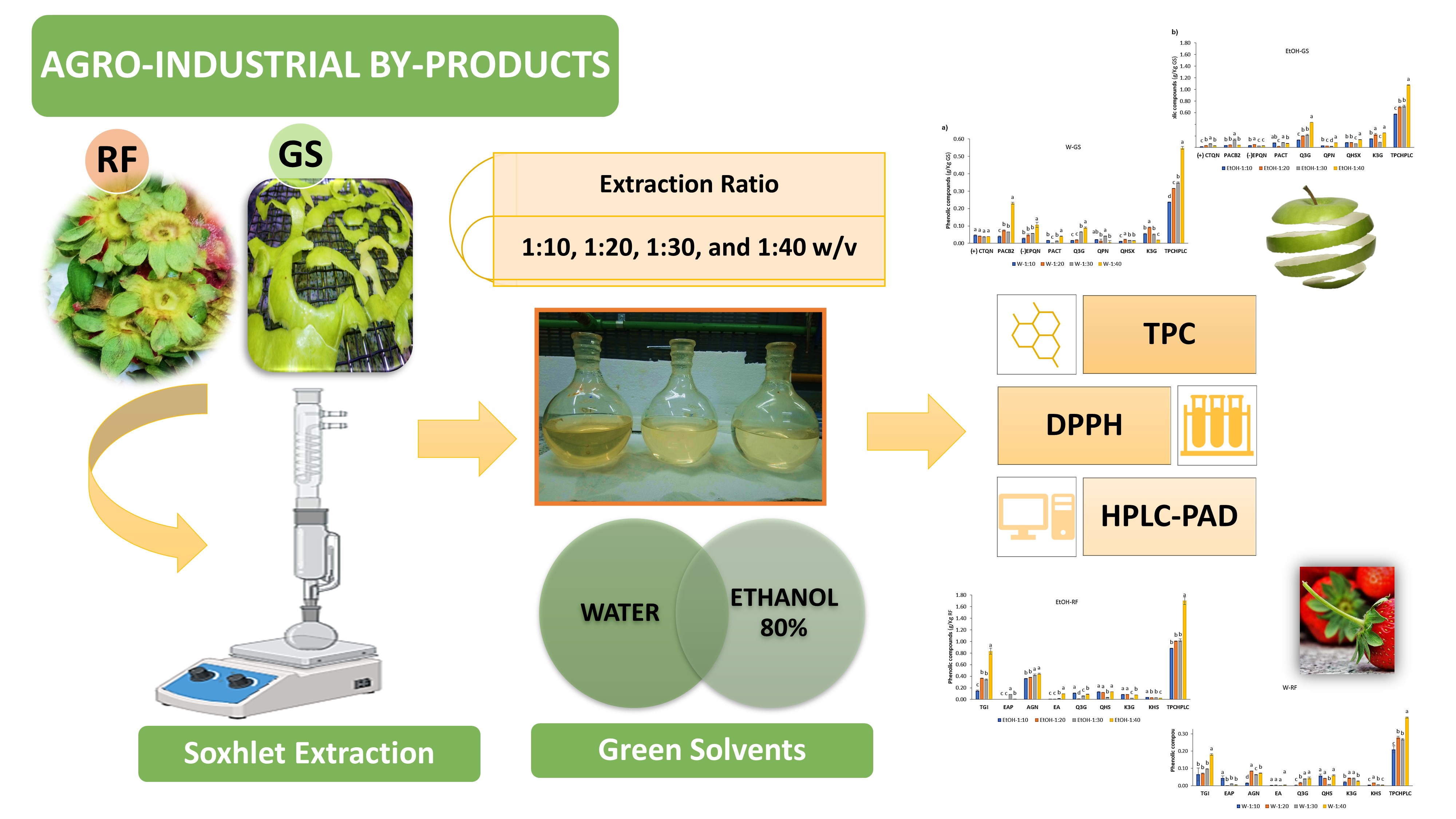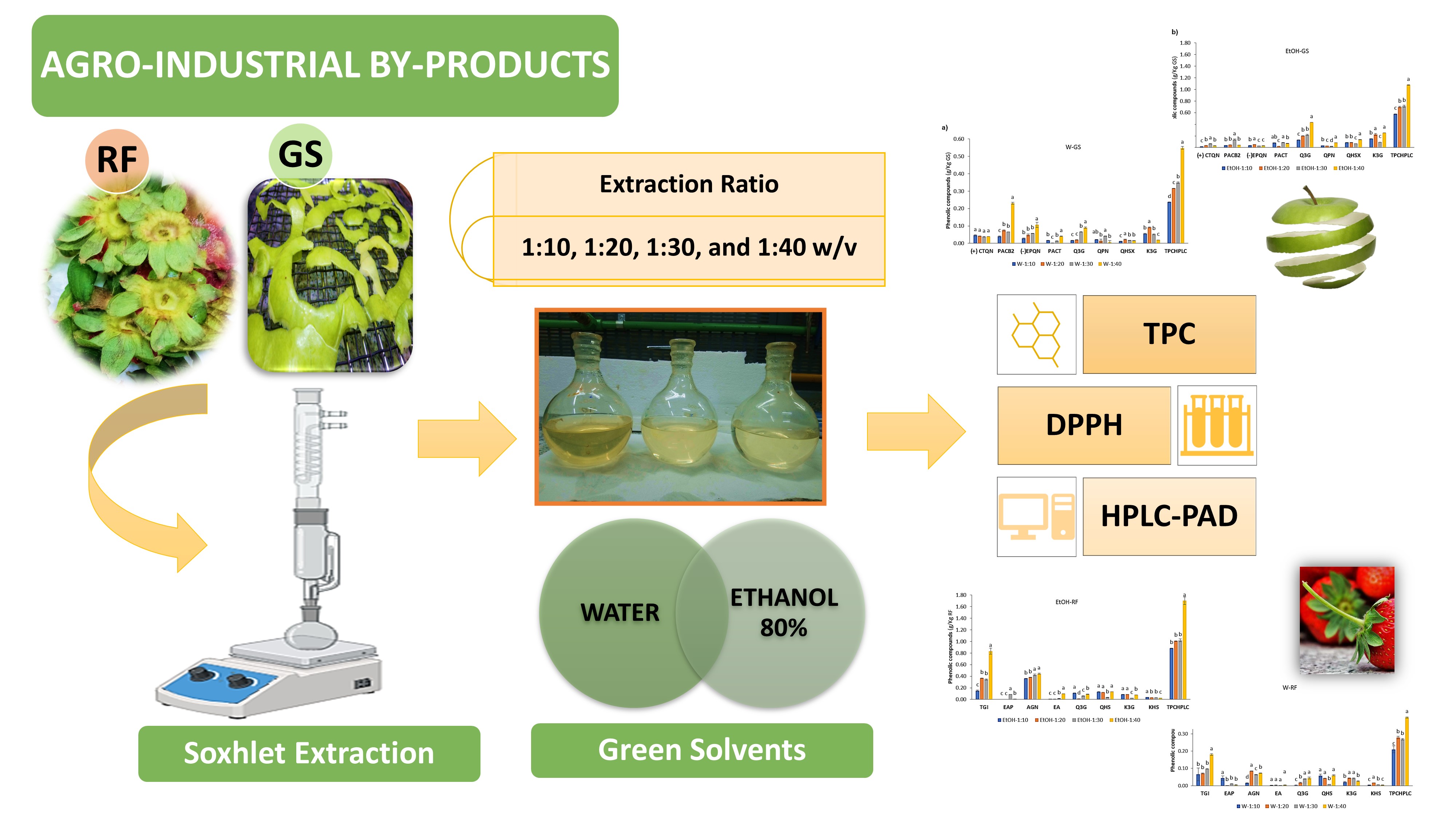Green solvents for the recovery of phenolic compounds from strawberry (Fragaria x ananassa Duch) and apple (Malus domestica) agro-industrial bio-wastes
DOI:
https://doi.org/10.48162/rev.39.131Keywords:
green extraction, bioactive compounds, hydrolysable tannins, flavonols, natural antioxidantsAbstract

We aimed to study the obtention of valuable phenolic compounds from tissue by-products of agro-industrial processing of apple (GS) and strawberry (RF) using green solvents and Soxhlet extraction methodology. The effects of solvent type [water (W); 80% ethanol, (EtOH)] and extraction ratio (1:10, 1:20, 1:30, and 1:40 p/v) were determined on total phenolic content (TPC), antioxidant capacity (DPPH), and the profile of phenolic compounds of the GS and RF extracts. The solvent type and the extraction ratio significantly affected TPC and DPPH of GS and RF extracts. Extraction with EtOH and 1:40 ratio produced the highest yields, obtaining an RF extract with 15.8 g GAE/Kg (TPC) and 19 mmol TE/Kg (DPPH). The tetra-galloyl glucose isomer and agrimoniin (0.8-0.4 g/Kg) were the main RF phenolic compounds of the eight identified. GS extract, obtained with EtOH and 1:40 ratio, had 11.9 g GAE/Kg (TPC) and 20.5 mmol TE/Kg (DPPH), having quercetin -3-o-glucuronide (0.43 g/Kg) the highest concentration among the eight phenolic compounds identified. The results highlight the potential of green solvents to obtain valuable compounds from low-cost raw materials, like the high-antioxidant capacity phenolic compound extracts obtained herein.
Highlights:
- Valuable bioactive compounds can be extracted from strawberry and apple agro-industrial waste.
- Extraction parameters affected phenolic compound profile and antioxidant capacity.
- Apple and strawberry by-products are low-cost sources of hydrolysable tannins and flavonols.
- Green solvents used for biowaste valorisation can help in circular economy transformation.
Downloads

Published
How to Cite
Issue
Section
License
Copyright (c) 2018 Revista de la Facultad de Ciencias Agrarias UNCuyo

This work is licensed under a Creative Commons Attribution-NonCommercial-ShareAlike 3.0 Unported License.
Aquellos autores/as que tengan publicaciones con esta revista, aceptan las Políticas Editoriales.










.jpg)




